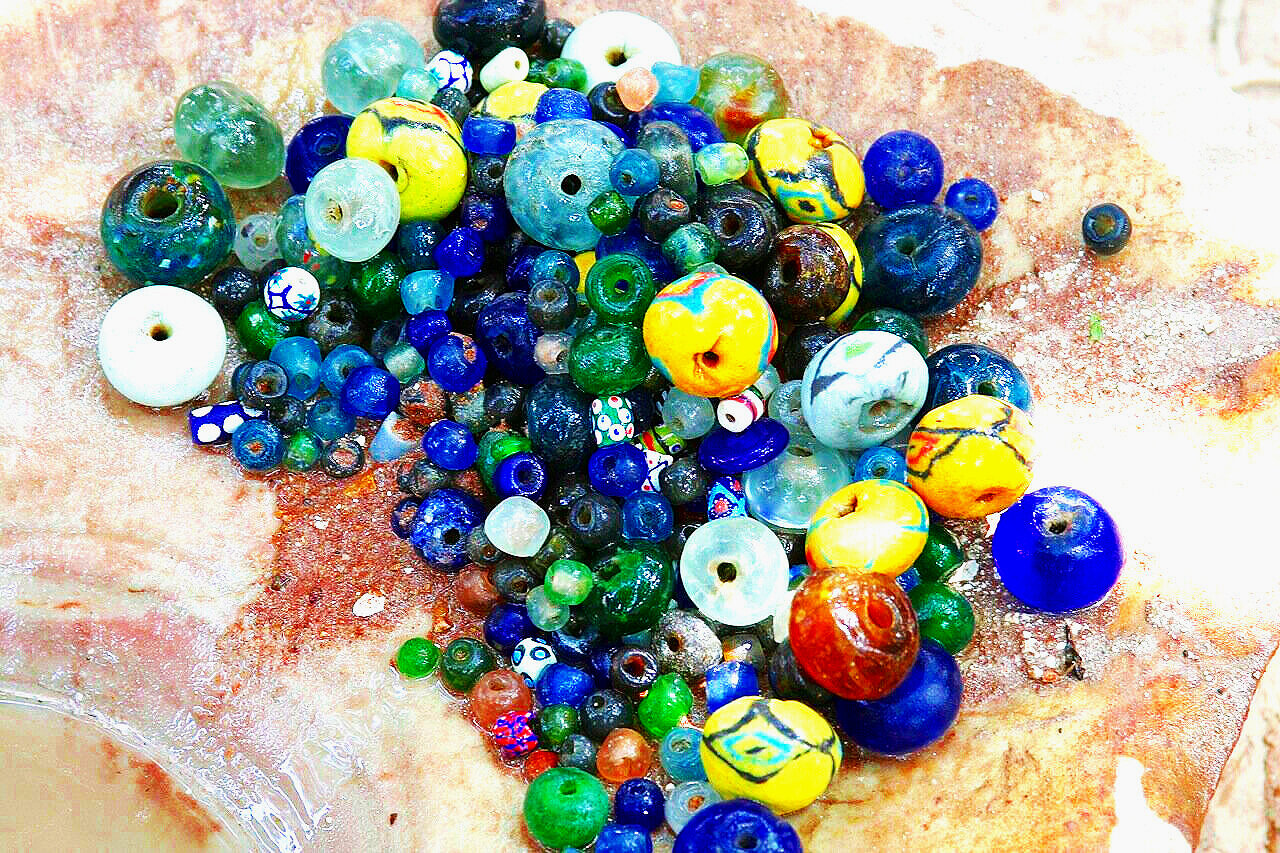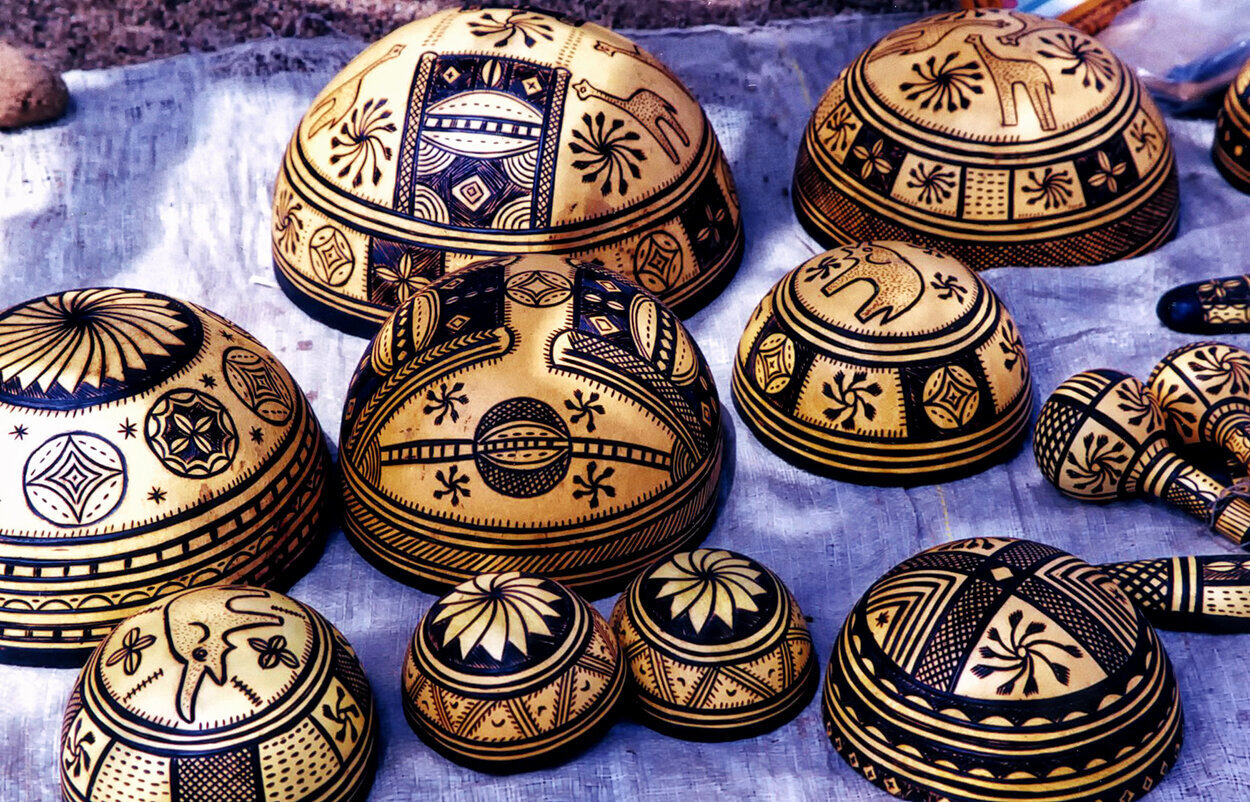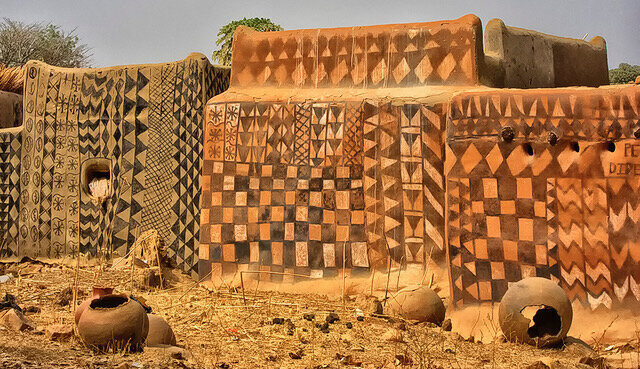
West African Indigo Cloth
Journey with a quest: Indigo textile artisan, Dogon Country, Mali
I had heard that some of the best dyers of indigo had settled in Mali, West Africa. After seeing the renowned “blue men” of Timbuktu, I headed to the Dogon country to meet a famous indigo and stitch-resist dyer, Maryama Napo. The Dogons are an indigenous cliff-dwelling tribe in the Bandiagara escarpment of Mali.
Many of the Dogons follow the Tellem funeral practices of long ago, in which an indigo-blue blanket was used to bury a high-ranking member of the village. (The Tellems were thought to inhabit the area from the 11th century A.D.) Maryama made her own indigo dye from wild plants that grew in the cliffs.
She and her weavers would gather in the large courtyard in front of her home to make stitch-resist patterns on narrow strips of handwoven white cloth that they bought from male weavers in the markets. The strips would be sewn together to form a large cloth used for funeral shrouds or for women to wrap around their waists like a skirt.
Maryama and her husband
Stitching cotton fabric to resist the dye and create the pattern
Textile patterns and how they are made
The most popular designs were of the onion fields, which fan out along the Niger River not far from Maryama’s home. She traced the outline of her fingernail on the white narrow strip cloth, as a pattern for the precision rows of onions. Afterward, she took a needle and thread to stitch over the pattern so it would resist the indigo dye. When dyed in the indigo vat and then dried in the shade, the textile’s pattern is revealed when the stitched threads are removed.
Finger nail tracing to depict the onion fields
Dyeing with natural indigo
A dyer’s vat is a closely guarded secret. Dyers are thought to possess healing or spiritual power, and often they are called in to assist a woman in childbirth. Maryama never gave me any specifics with regard to how she made her indigo, other than that she would add dried indigo leaves to her vat and ash water (water that has been filtered by burned millet), and another ingredient like cola nuts to aid the fermentation process. The vat was always in the shaded part of her courtyard, which she watched attentively. Indigo is ready when it reaches a bubbling purple peacock hue. Luckily for me, she was making indigo the day I trekked up to the village in the escarpment.
Maryama dyeing her cotton cloth in an indigo vat
My guide Abdoulaye could speak the Dogon language and interpreted Maryama’s explanations. Dogon’s skills are passed down from mother to daughter. The designs are mainly stitch-resist, and a woman wears a patterned indigo textile until she reaches menopause, when she changes to an undecorated indigo wrap.
Sadly, I have not been able to return to Mali since 2016 due to civil unrest, but the exquisitely dyed indigo textiles from Maryama will always be among my favorite pieces from West Africa.
Dried indigo
Maryama's Indigo vat
Mature indigo bubbling peacock color
Stitch resist cloth dipped in indigo dyeing vat
Maryama, renowned indigo dyer Dogon country

















